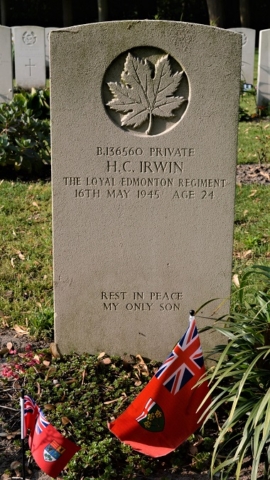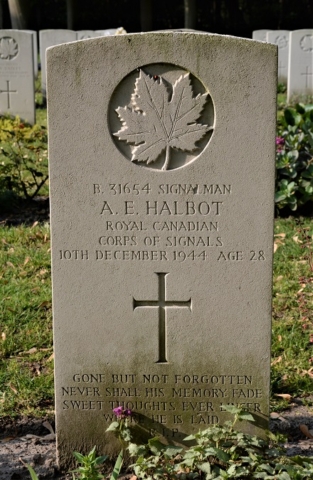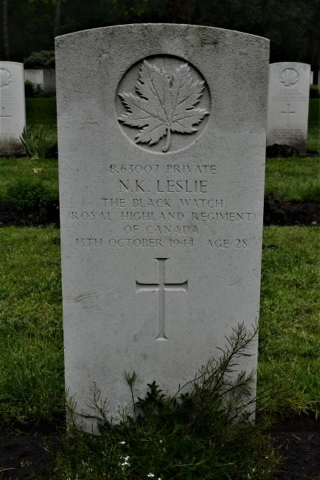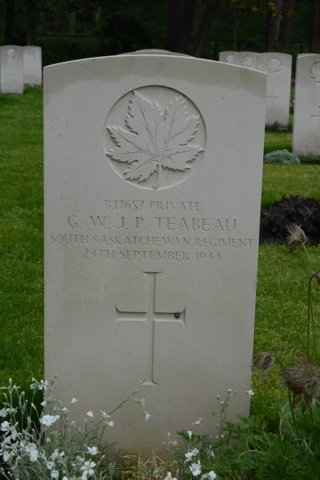We travelled by train from Mons to Aalter, Belgium and then by bus to Maldegem. Unfortunately, there are no taxis in Maldegem, so ask your host where you are staying and how to get there.
We now leave the battlefields of the First World War behind us and return to the events of the Second World War. The second war was indeed a global conflict. It encompassed almost all of Europe and parts of Africa, Asia and the South Pacific. Most of the first war battles were along the French and Belgian border and around Turkey and the Middle East.
In the Second World War, the Canadian Army moved east along the coast. The British were further south and the Americans went through Paris. By September 1944, the Canadians had arrived at the eastern part of Belgium near the border with the Netherlands.
The Battle of the Scheldt
The Battle of the Scheldt took place from 2 October to 8 November 1944.
The Scheldt is a river in Belgium near the border with the Netherlands. The estuary is near the Belgium/Netherlands border. It flows into the Valkenisse (a fiord or bay that flows into the English Channel).
History
After the successful invasion of Normandy and the capture of Caen, the Canadian Army moved east toward Germany, driving the Germans back and liberating towns as they went. They were especially pleased to liberate the city of Dunkirk, where their disastrous raid took place in 1942. Their next big battle was the Battle of the Scheldt.
British, Canadian and Polish forces tried to capture the area to have a shipping route to the port of Antwerp, which would significantly shorten their supply line. The Allies had already captured the city of Antwerp. However, the port could not be used as long as the Germans controlled the Scheldt and the estuary.
It took five weeks of vicious fighting to drive the Germans back from the area at a cost of 12,873 casualties, half of them Canadian. The Germans flooded the area so that the Allies could only travel on certain high roads. These roads were then targeted and mined. It took a further three weeks to clear the Valkenisse of mines before the first convoy could go to Antwerp.
Although conditions were not as bad as Passchendaele in the First World War, the flooded, muddy fields made the Battle of the Scheldt the most difficult of the Second World War. Nevertheless, by 31 October, the allies had captured the area except for the island of Walcheren where the Germans were entrenched.
The Canadians attacked across the causeway. At the same time, the dykes were breached to flood the island, and the Royal Air Force and the Canadian Air Force began a bombing campaign. Life on the island must have been very unpleasant for the Germans, but still, they resisted. It took until the 8th of November to capture the island. By 28 November, the Scheldt was open for shipping to the port of Antwerp. This enabled the allies to resupply the troops so they could advance further across the Netherlands and into Germany.
There are two cemeteries where casualties from the Battle of the Scheldt are buried. One on the Belgian side of the river at Adegem and one on the Dutch side at Bergen Op Zoom.
Maldegem, Belgium
Adegem Canadian War Cemetery
The Adegem Canadian War Cemetery is located about 5 km from the town of Maldegem in north-eastern Belgium on highway N9.
The cemetery contains 1,119 graves, most of which are Canadian. Included with that number are 33 Polish, 285 British, two French, a few Australian and New Zealand graves, and one unidentified soldier from the First World War. Why he is here, alone, far from the battlefields of the first war, I don’t know.
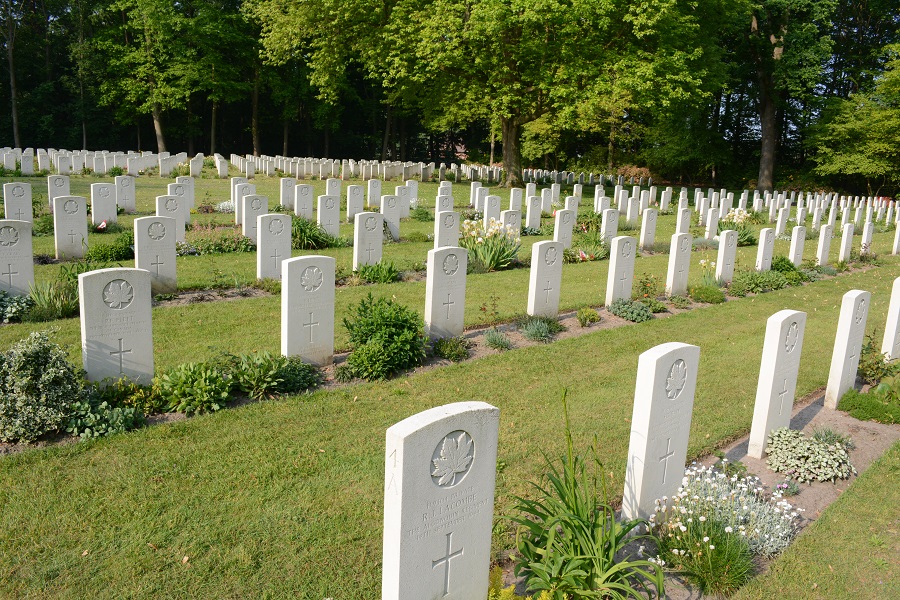
Click on the first photo to enlarge and then scroll to others.
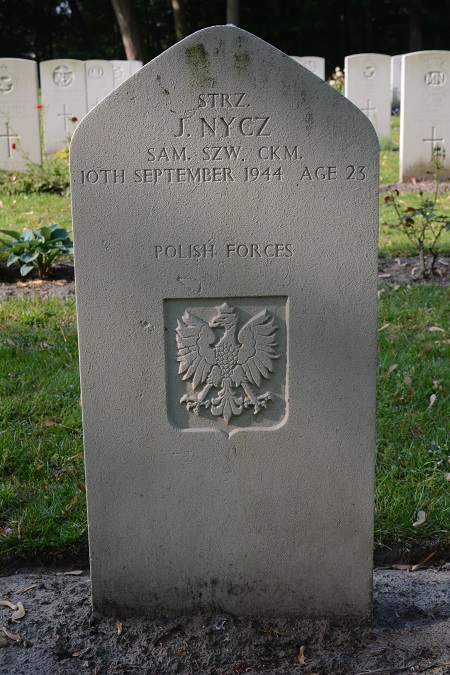
The Adegem Canadian Cemetery also contains 33 graves of the Polish Forces.

Some local families have “adopted” a Canadian solder. They visit the grave often. They do research and try to find a photo of him and get it sealed in weatherproof plastic and then mounted on a little piece of wood. They bring flowers, flags, candles and other items to the grave. Sometimes they leave a letter to the soldier’s family, thanking them for his sacrifice. A local family has adopted this soldier of the Algonquin Regiment.
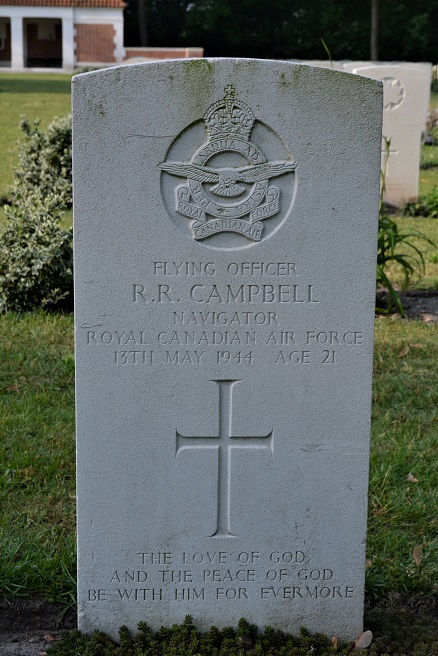
Many of the Canadian graves are pilots and crew of the aircraft that were shot down during the battle.
The Canada-Poland War Museum
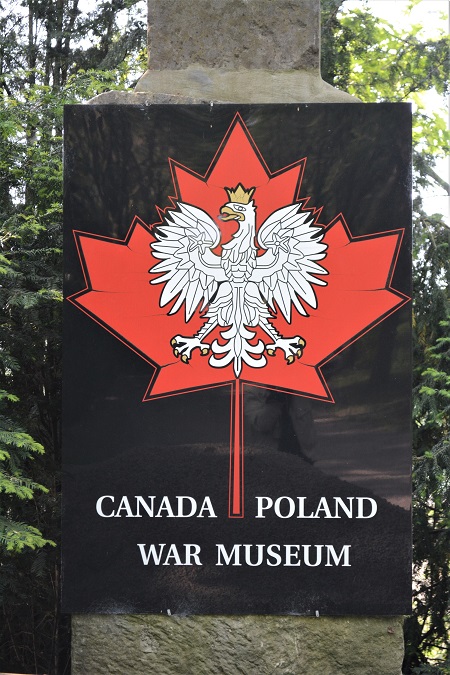
The Canada-Poland War Museum is a private-owned and operated museum that a local family started as a way to thank the Canadian and Polish soldiers who liberated them from the Germans.

Although this is just a private family museum, it is in a large building with a fantastic collection of artefacts. It is better than some government-operated museums—worth going to see.
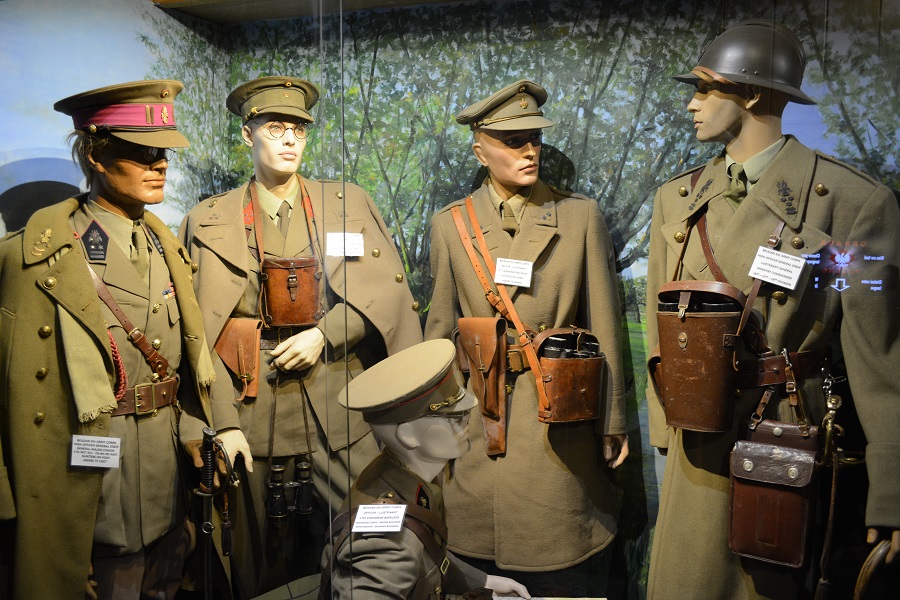
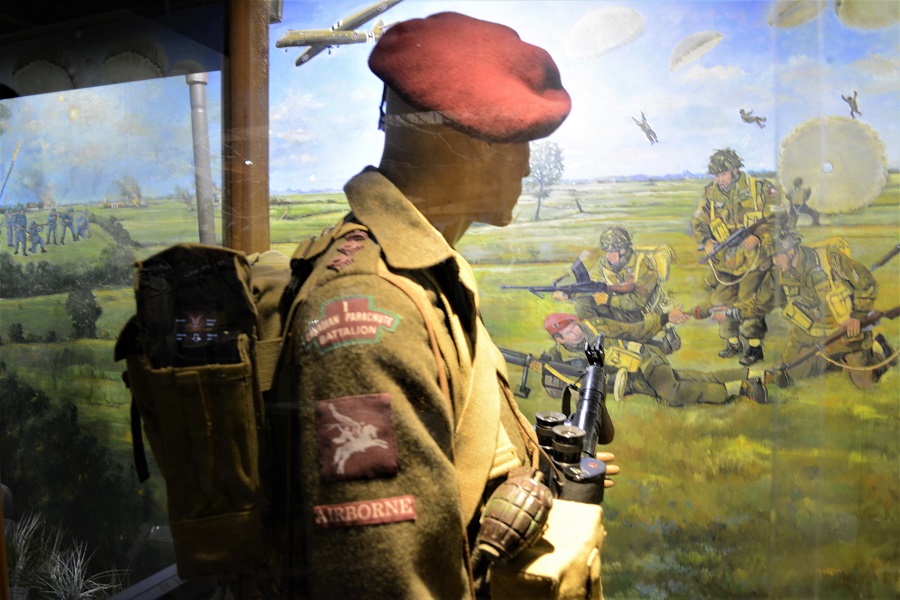
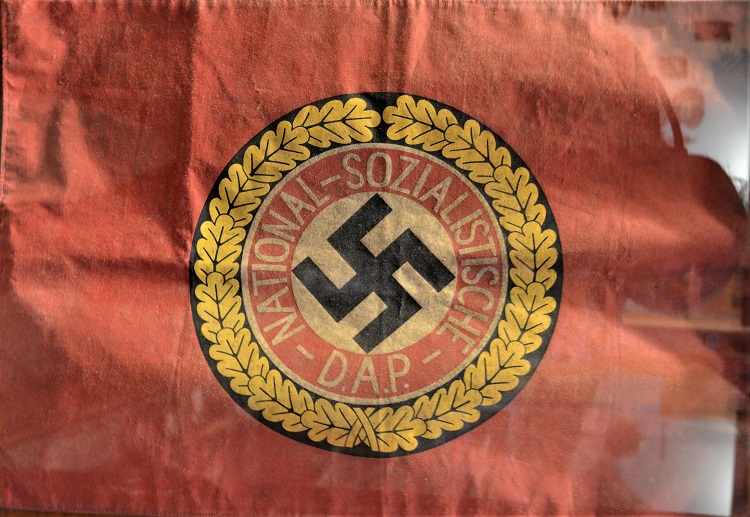
This is not a German wartime flag which was simply a red flag with a swastika. This is the political flag of the “National Socialist German Workers Party”, the NSDAP. In other words, the Nazi political party, not the country. This flag is extremely rare. I have been to many war museums worldwide, including the national war museums of Canada, Great Britain, and Australia and have never seen one of these flags before.
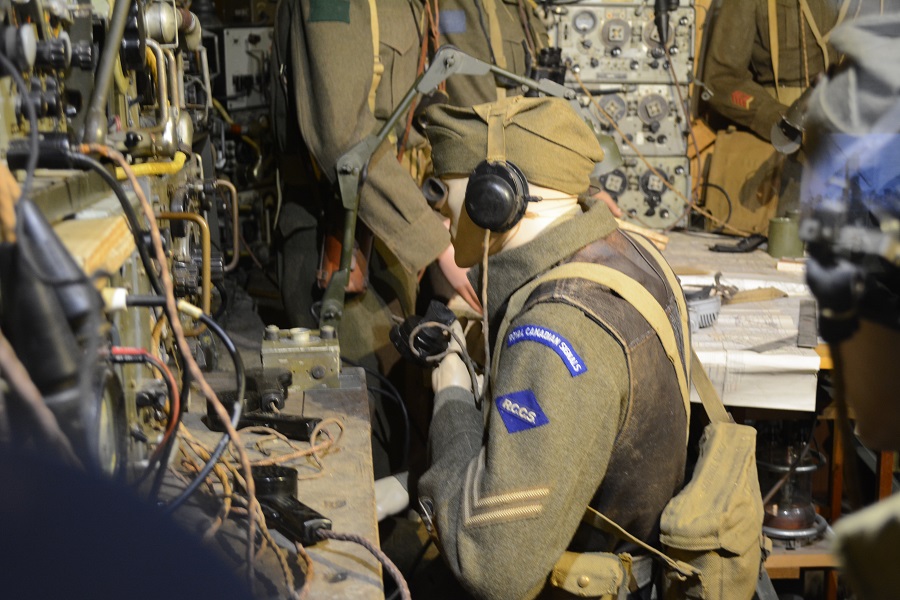
A Canadian radio operator sending a message.
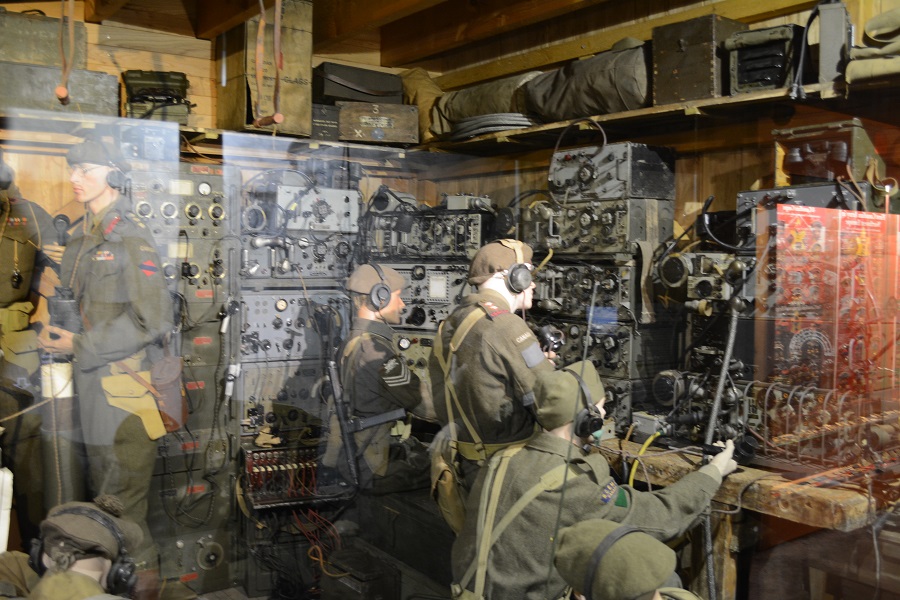
The museum has a vast, amazing collection of wartime radio equipment.
We travelled by train from Aalter, Belgium, to Bergen Op Zoom on the other side of the Scheldt in the Netherlands.
Bergen Op Zoom, Netherlands

Canadian War Cemetery

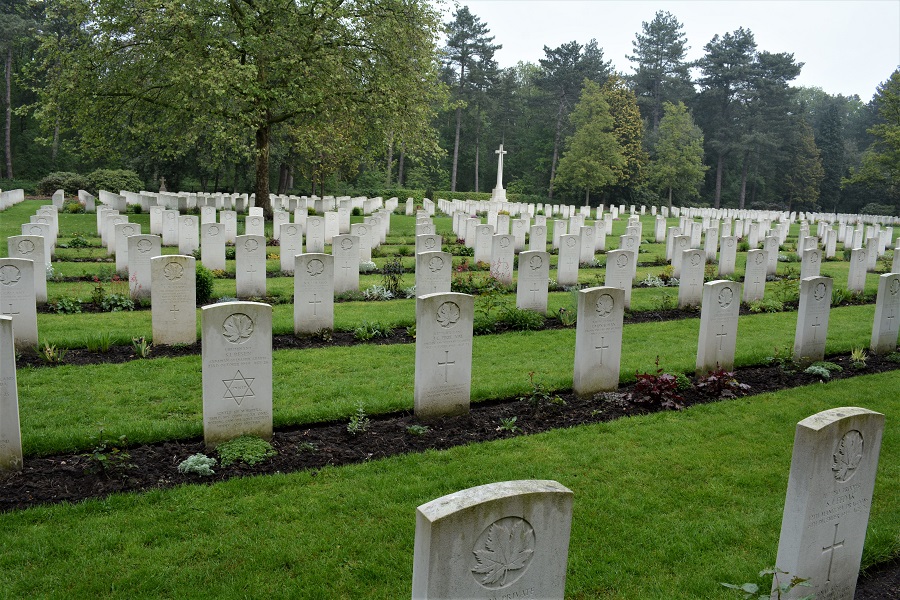
The cemetery has 1,118 graves, most of which are Canadian of almost every regiment and corps. Of this total, 31 of the burials are unidentified. There were not near as many unidentified bodies in the Second World War as in the first. During the First World War, the battle was primarily static along the French and Belgian border, and thousands of soldiers disappeared in the craters and waist-deep mud. Some were destroyed by artillery, and others lay for long periods on the battlefield as it was not safe to retrieve them.
In the Second World War, the battles moved from place to place, giving more opportunities to retrieve bodies for burial.
Click the first photo to enlarge and scroll through others.
Christmas at the Cemetery

Every Christmas, the people of Bergen Op Zoom go to the Canadian War Cemetery and place a candle on every grave. This is also done at other Canadian cemeteries in the Netherlands.
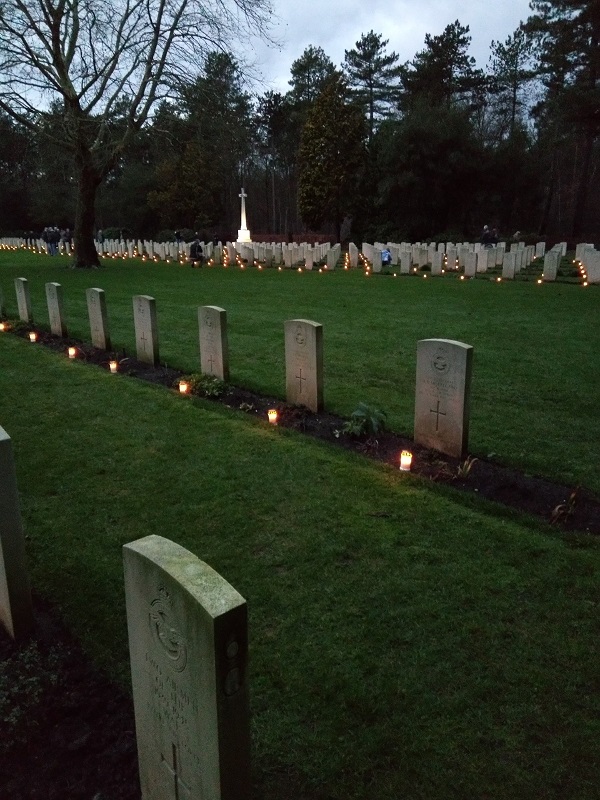

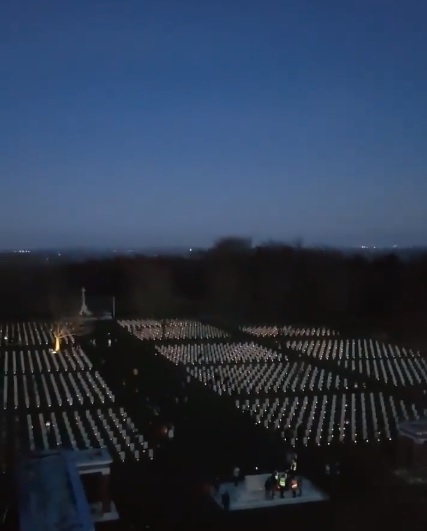
Christmas photos courtesy of Ad in Bergen Op Zoom
There are two war cemeteries side-by-side at Bergen Op Zoom. One is British, and the other is Canadian. They are located about 3 km from the city centre on Ruytershoveweg near the A58 freeway. So if you can’t get a ride from someone in Bergen Op Zoom, it is not too far to walk back.

